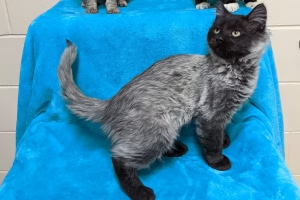Cats are often seen as mysterious, independent creatures, but even the calmest kitty can have moments of sudden aggression or irritability. Whether it’s a hiss, a swat, or a puffed-up tail, angry cats can surprise even the most experienced cat owners. Understanding what causes feline anger and how to handle these feisty felines is key to maintaining a harmonious relationship with your furry friend.
Why Do Cats Get Angry?

Unlike dogs, cats often display their emotions in more subtle ways. However, when a cat becomes angry, the signs can escalate quickly. Some common reasons why cats become aggressive or irritable include:
Fear or Anxiety
One of the most common triggers of an angry cat is fear. Loud noises, unfamiliar people, new environments, or other pets can make a cat feel threatened. When a cat feels cornered or unable to escape, it may lash out as a defense mechanism.
Territorial Instincts
Cats are naturally territorial creatures. If another animal invades their perceived space, whether it’s a new cat, dog, or even a human, they may become angry and aggressive to assert dominance.
Pain or Illness
Physical discomfort is another major cause of feline anger. Conditions like arthritis, dental disease, or internal issues can cause your cat to react negatively, especially when touched or handled.
Overstimulation
Ever petted a cat too much and suddenly been swatted? Cats can become overstimulated during playtime or petting sessions. What starts as pleasurable can quickly turn to irritation if they feel overwhelmed.
Lack of Socialization
Cats that haven’t been properly socialized as kittens may have trouble managing their emotions around people or other animals. They may interpret unfamiliar situations as threats and react aggressively.
Common Signs of Angry Cats
Recognizing the body language of an angry cat is crucial in preventing bites, scratches, or escalating aggression. Look out for these telltale signs:
- Hissing or growling
- Flattened ears
- Dilated pupils
- Arched back and puffed-up fur
- Tail lashing or twitching
- Swatting or biting
- Sudden sprinting away or hiding
Understanding these signals early can help you back off and give your cat space before things get out of hand.
How to Calm an Angry Cat
Once you’ve identified that your cat is angry, the next step is managing the situation carefully. Here are some practical tips:
Give Them Space
The number one rule when dealing with an angry cat is to leave them alone. Don’t attempt to touch, pick up, or force interaction. Allow your cat time and space to cool down naturally.
Remove Triggers
If possible, identify and remove the source of their anger. Whether it’s another pet, a noisy environment, or an unfamiliar object, eliminating the trigger can help calm your cat.
Create a Safe Zone
Provide your cat with a quiet, safe space where they feel secure. This could be a designated room, a cozy hiding spot, or a perch high up where they can observe without being disturbed.
Use Calming Products
There are various products on the market designed to soothe angry or anxious cats. Options include:
- Feliway diffusers or sprays (mimics calming pheromones)
- Calming collars
- Herbal supplements (always consult your vet first)
Offer Interactive Toys
Channel your cat’s pent-up energy or frustration into play. Toys like feather wands, puzzle feeders, and laser pointers provide a healthy outlet and reduce aggressive behavior over time.
Consult Your Veterinarian
If your cat’s anger seems sudden, excessive, or unmanageable, it might be time to check in with your vet. Medical issues could be the root cause, and professional advice can help rule out underlying conditions.
How to Prevent Feline Aggression

Preventing angry behavior is always better than dealing with it after the fact. Here are a few strategies to minimize feline aggression:
Proper Socialization
Expose kittens to a variety of people, pets, sounds, and environments early on. Positive experiences during their formative months will help them become well-adjusted adult cats.
Respect Boundaries
Not all cats enjoy constant petting or handling. Learn your cat’s limits and respect when they’ve had enough interaction. Watch for early warning signs like a twitching tail or flattened ears.
Provide Enrichment
Boredom can lead to frustration and aggression. Ensure your cat has plenty of stimulation, including scratching posts, climbing towers, and interactive playtime.
Routine Veterinary Care
Regular health check-ups can prevent medical issues that could contribute to aggression. Vaccinations, dental care, and parasite control all play a role in keeping your cat healthy and happy.
Positive Reinforcement
Reward calm and friendly behavior with treats, affection, and praise. Avoid punishment-based approaches, which can increase fear and aggression.
Fun Fact: Angry Cats in Pop Culture
The image of the angry cat has become a popular symbol online, from viral memes to animated characters. One of the most famous examples is Grumpy Cat, whose perpetually annoyed expression won millions of fans. Though her appearance was due to a genetic condition rather than actual anger, it’s a testament to how the “angry cat” trope has charmed the internet!
Angry cats may seem intimidating, but their behavior usually stems from understandable emotions like fear, stress, or discomfort. By learning the causes, recognizing the signs, and handling situations calmly and respectfully, you can build a strong, trusting bond with your feline friend. With patience, understanding, and proper care, even the feistiest kitty can become a loving and relaxed companion.




